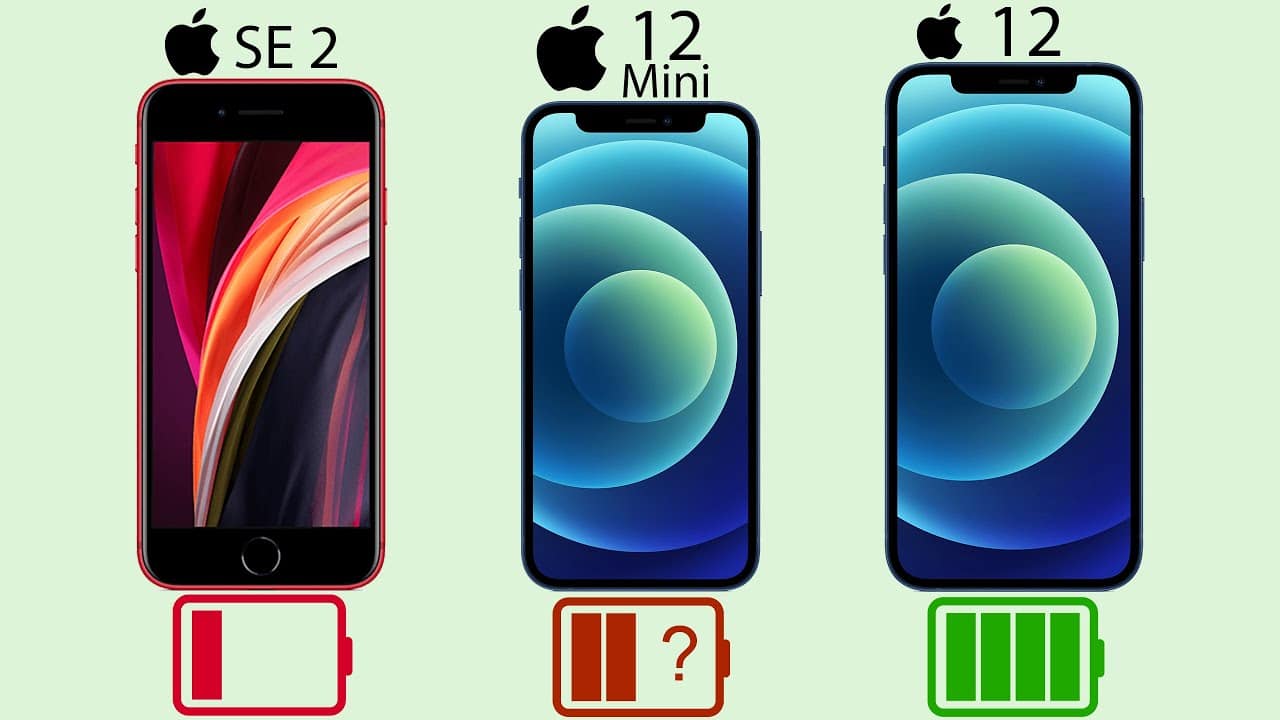
IPhone 12 mini (Image credit: Tom's Guide)

The iPhone SE lasted just 9 hours and 18 minutes, which is below the average time of around 10 hours for a typical smartphone. That doesn't translate to a very good battery life in our testing, which involves continuous web surfing over LTE until a fully charged phone runs out of power. Apple doesn't disclose the size of its phone batteries, but iPhone SE teardowns point to an 1,821 mAh power pack inside the device. The iPhone SE doesn't deliver much on the battery front. So if being able to connect to faster cellular networks is a key concern of yours, the iPhone SE is a non-starter. The iPhone 12 sets the new pace at 26 seconds.Īll four iPhone 12 models feature 5G support - something Apple skipped on the iPhone SE.
#Iphone se vs apple iphone 12 pro max 1080p
In our real-word test in which we time how long it takes for phones to transcode a 4K video to 1080p using Adobe Premiere Rush, the iPhone SE pulls off the task in 43 seconds.
#Iphone se vs apple iphone 12 pro max android
The iPhone SE scored 3,226 - good enough to beat many Android flagships, but far behind the A14-powered phones. How much more powerful? Our iPhone 12 benchmarks tell the story, but to sum up, the iPhone 12 and iPhone 12 Pro posted multicore scores of 3,859 and 3,880 in Geekbench 5. The iPhone 12 outdoes that, though, with the A14 Bionic, a 5-nanometer processor that's more powerful and power efficient than the 7nm A13. That means you've got flagship power in a sub-$400 device - one of the iPhone SE's main selling points. We mentioned the iPhone SE uses the A13 Bionic chipset, a processor that can outperform top-of-the-line Android devices. There's no support for Night mode on the iPhone SE, so look elsewhere if you want a phone that can take crisp photos when the lights are low. There is one area where the iPhone SE lags Apple's current iPhones. That enables the iPhone SE to take portrait shots and bring out highlights in faces using Smart HDR. Because the iPhone SE features the same A13 Bionic processor as the iPhone 11 lineup, it benefits from a neural processor on that chipset. The iPhone SE keeps it simple with a single 12MP camera on its back, and while that certainly limits its flexibility when it comes to zooming in and pulling back to capture different details, all is not lost. (The closer to zero, the more accurate the score.)

The iPhone SE's Delta-E rating of 0.2 is more closer to accurate than all of the iPhone 12 models, save for the iPhone 12 Pro Max, which tallied a nearly perfect 0.07. The iPhone 12 mini and iPhone 12 Pro capture 117.8% and 115.6% of the sRGB color spectrum, which is slightly more than the SE's 111.2%. That translates to slightly more colors on the iPhone 12 screens. None of the iPhone 12 models feature the fast refresh rate that had been rumored prior to their launch, but they do enjoy at least one edge over the iPhone SE - they're all using OLED panels, even the cheaper mini and iPhone 12 models. The iPhone 12 mini measures 5.18 x 2.53 x 0.29 inches, which is shorter and not as wide as the 5.18 x 2.53 x 0.29-inch iPhone SE. The 5.4-inch iPhone 12 mini is especially appealing to small phone fans, since it's actually smaller than the iPhone SE, even though that latter phone has the smaller screen. Both also have Lightning ports for charging, and neither has a headphone jack.IPhone 12 and iPhone 12 mini (Image credit: Tom's Guide) Apart from that, both the models have a glass rear and a metal casing, so the material is the same. The iPhone 13 features a pair of lenses, while the iPhone SE has just one. The iPhone SE is part of the old-school crew, having a Home button, no notch (as it is not compatible with Face ID), and a smaller screen.įlip the two iPhones over, and you’ll see the back sporting different cameras for both models.

The iPhone 13 follows the latest trend in iPhones, with a notched display, no Home button, and a screen that stretches out across the entire device. Another significant change will be the presence of a Home button on the iPhone SE. At first glance, you’ll see a slight variation in size, with the iPhone 13 being the larger device at 5.8 x 2.8 x 0.3 inches and the iPhone SE being slightly smaller at 5.5 x 2.7 x 0.3 inches. To begin with, put the two iPhones side by side and you’ll notice some noteworthy changes between them, from the front as well as the back.


 0 kommentar(er)
0 kommentar(er)
